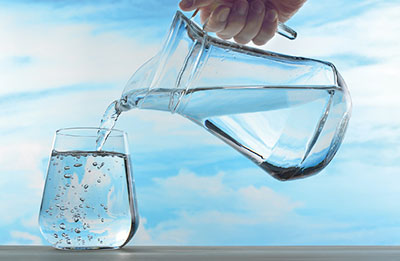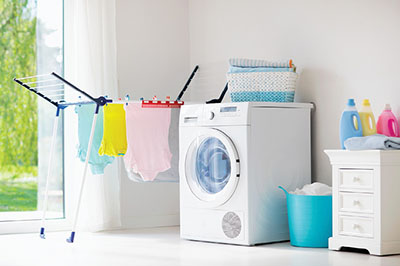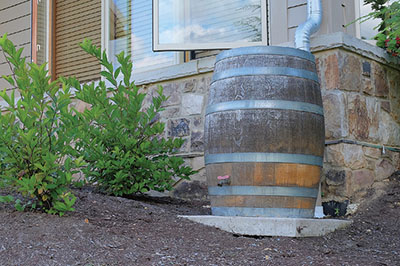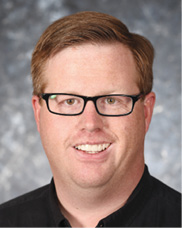Guide G-533
By Rick Griffiths and Sonja Koukel
College of Agricultural, Consumer and Environmental Sciences, New Mexico State University
Respectively, Extension Family and Consumer Sciences Agent, San Juan County Extension Office; and Community and Environmental Health Specialist/Professor, Department of Extension Family and Consumer Sciences, New Mexico State University. (Print Friendly PDF)
Water is a valuable resource. We can help save water and reduce the amount of money we spend on it by making simple changes in our daily lives. One way to reduce our water use is to purchase low-flow plumbing fixtures, such as high-efficiency showerheads, toilets, and faucets. Another way is to be aware of our daily activities and the amount of water we’re using.

© Amenic181 | Dreamstime.com
The top users of water in the home include:
- Toilets
- Showers
- Faucets
- Washing machines
The following are tips to save both water and money in your daily life.
Toilets
- Install a low-flow toilet if your home does not have one. These may also be called high-efficiency or low-flush toilets depending on the maker.
- Only use toilets to dispose of human waste and toilet tissue. All other materials should be placed in the trash.
- Check for slow leaks by adding food coloring, such as red, to the water in the tank. If the colored water appears in the toilet bowl, it means there is a leak that needs to be fixed.
Showers/Bathing
- Shorten shower times. A shower uses 2 to 5 gallons of water per minute.
- Install a low-flow/high-efficiency showerhead.
- Use an all-in-one shampoo, hair conditioner, and body wash to shorten shower times.
- Wash your hair less frequently. Try using dry shampoo products between washings.
- When the shower water is warming up, catch the water in a bucket or other container and use it to water plants, flush toilets, or for household cleaning.
- Make baths an occasional treat. The average bath uses 35 to 50 gallons of water. A 10-minute shower with a low-flow showerhead uses about 25 gallons.
Faucets
- Keep a pitcher or bottle of drinking water in the refrigerator. This will avoid running the faucet to get cold water.
- When running a faucet, catch the overflow water in a bowl or container and use it to water garden plants or houseplants.
- When using the dishwasher, don’t use the faucet to rinse food particles from plates and utensils before loading them. Instead, scrape the food into the garbage. Only run the dishwasher when you have a full load.
- When brushing your teeth, save water by using these steps:
- Wet the toothbrush and turn off the water.
- Apply toothpaste and brush your teeth.
- Turn on the water to rinse.
- When shaving, use a bowl of water to rinse the razor instead of running the faucet.

© Famveldman | Dreamstime.com
Washing Machines
- Buy a washing machine with the Energy Star label. Energy Star washing machines use about 25% less energy and 33% less water than other types of washing machines.

- For older machines with manual controls, adjust your setting based on the size of your washing load:
- Small load – the load fills 1/4 of the machine
- Medium load – the load fills 1/2 of the machine
- Large load – the load fills more than 1/2 the machine
- Extra-large load – the load fully fills the machine (not available on all machines)
- Only wash clothing and household laundry when it’s needed.
- Clothing made of denim, like jeans, can be worn more than once between washings.
- Bath towels don’t need to be washed every day. Hang them to dry after using.
- Clothing items can often be worn more than once between washes.
- Use the cotton wash setting instead of synthetic wash. The synthetic wash setting uses 50% more water than the cotton wash setting.
Additional Water-Saving Tips
- Run swamp coolers only when people are at home. There’s no purpose in cooling an empty house.
- When cooking, steam food instead of boiling; it uses less water and is healthier.
- Avoid using the garbage disposal whenever possible. Compost food waste or dispose of it in the trash.
- Use a broom to sweep indoor floors. Mop only when needed.
- Dry your clothes on a drying rack or a clothes line. When you save energy, you also save water because power plants use a lot of water to produce electricity.
- At restaurants, only order water if you intend to drink it.
- Extend times between car washes. When washing is necessary, use a commercial car wash that uses recirculated water.
- Use a broom to clean dirty sidewalks instead of spraying with a garden hose.
- Install low-flow spray nozzles on outdoor water hoses.
- Install a rain barrel to catch runoff water to use on flowerbeds or gardens.

© Andrewmits | Dreamstime.com
- Adjust lawn sprinklers so they are not watering driveways, sidewalks, or patios. For more landscape water-saving tips, see NMSU Extension Guides H-504, How to Water Your Lawn (https://pubs.nmsu.edu/_h/H504.pdf), and H-707, Landscape Water Conservation: Principles of Xeriscape (https://pubs.nmsu.edu/_h/H707.pdf).
Sources
Cope, K., and B. Dvorak. n.d. House hold water use: Typical uses and conservation practices. Retrieved July 26, 2018, from https://droughtresources.unl.edu/household-water-use
Energy Star. n.d. Clothes washers. Retrieved March 14, 2019, from https://www.energystar.gov/products/appliances/clothes_washers
Environmental Protection Agency, Region 1. 2017, April 10. Water conservation tips for residents. Retrieved March 14, 2019, from https://www3.epa.gov/region1/eco/drinkwater/water_conservation_residents.html
Gunshinan, J. 2011, December 15. How to wash that energy waste right out of your hair. Retrieved July 26, 2018, from https://ww2.kqed.org/quest/2011/12/15/how-to-wash-energy-waste-out-of-your-hair/
How to Save Water. n.d. Water efficient washing machines. Retrieved April 26, 2019.
Mitroff, S., and A. Bradford. 2018, April 18. Here’s what all the settings on your old washing machine really mean. Retrieved March 20, 2019, from https://www.cnet.com/how-to/washing-machine-settings/
Siemek, S. 2013, December 03. Save water and energy: Better ways to do laundry. Retrieved March 14, 2019, from https://newyork.cbslocal.com/2013/12/03/save-water-and-energy-better-ways-to-do-laundry/
Swistock, B. 2005, February 11. Saving water in an emergency. Retrieved July 26, 2018.
Water Footprint Calculator. 2017, August 2. How to save water: Laundry. Retrieved April 26, 2019.
Water Footprint Calculator. 2017, August 2. How to save water: Shower & bath. Retrieved March 14, 2019, from https://www.watercalculator.org/save-water/shower-bath/
Water Footprint Calculator. 2018, October 2. What is the water-energy-food nexus? Retrieved April 26, 2019.
For Further Reading
G-313: Green Alternatives to Toxic Household Products and Hazardous Waste
https://pubs.nmsu.edu/_g/G313/
G-315: Green Cleaning Methods for Your Home
https:/pubs.nmsu.edu/_g/G315/
H-504: How to Water Your Lawn
https://pubs.nmsu.edu/_h/H504/
H-707: Landscape Water Conservation: Principles of Xeriscape
https://pubs.nmsu.edu/_h/H707/

Rick Griffiths is the San Juan County Extension Family and Consumer Sciences Agent at NMSU. He received his M.Ed. in adult learning from Westminster College of Salt Lake City and B.S. from Southern Utah University in family and consumer science education. His areas for focus are personal finance, health and wellness, and emergency preparedness.
To find more resources for your business, home, or family, visit the College of Agricultural, Consumer and Environmental Sciences on the World Wide Web at pubs.nmsu.edu.
Contents of publications may be freely reproduced, with an appropriate citation, for educational purposes. All other rights reserved. For permission to use publications for other purposes, contact pubs@nmsu.edu or the authors listed on the publication.
New Mexico State University is an equal opportunity/affirmative action employer and educator. NMSU and the U.S. Department of Agriculture cooperating.
November 2019 Las Cruces, NM


